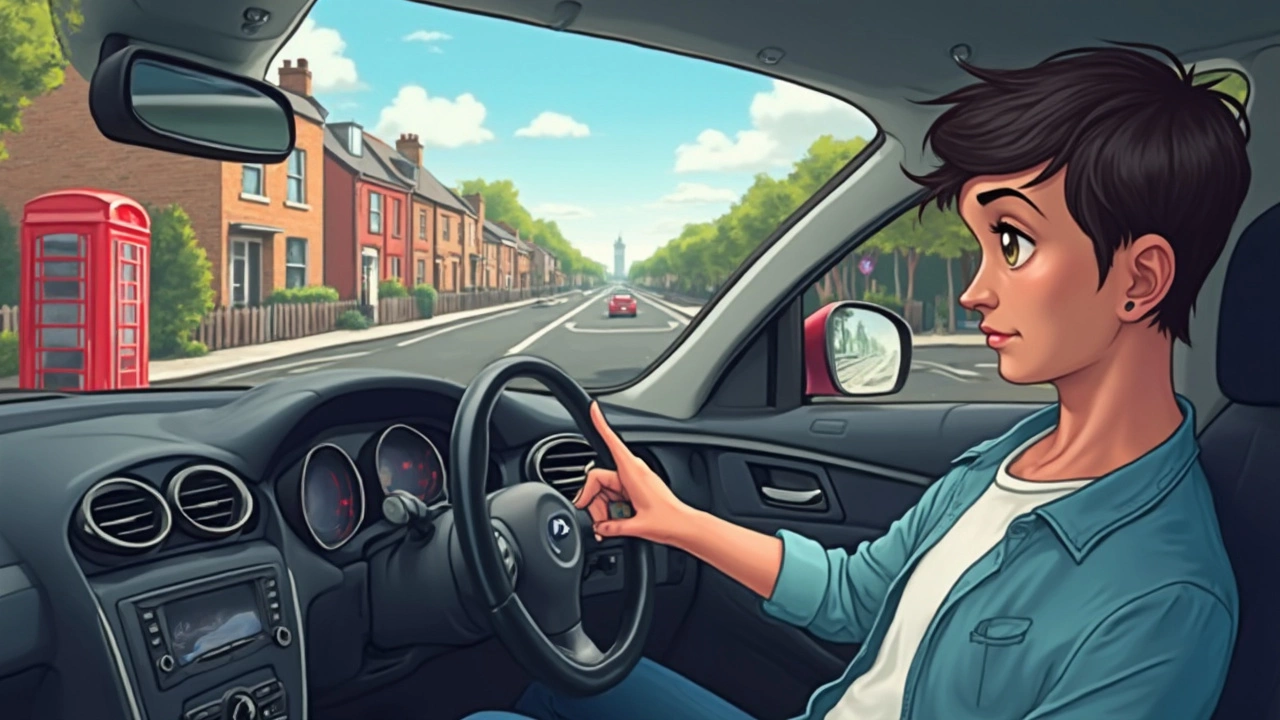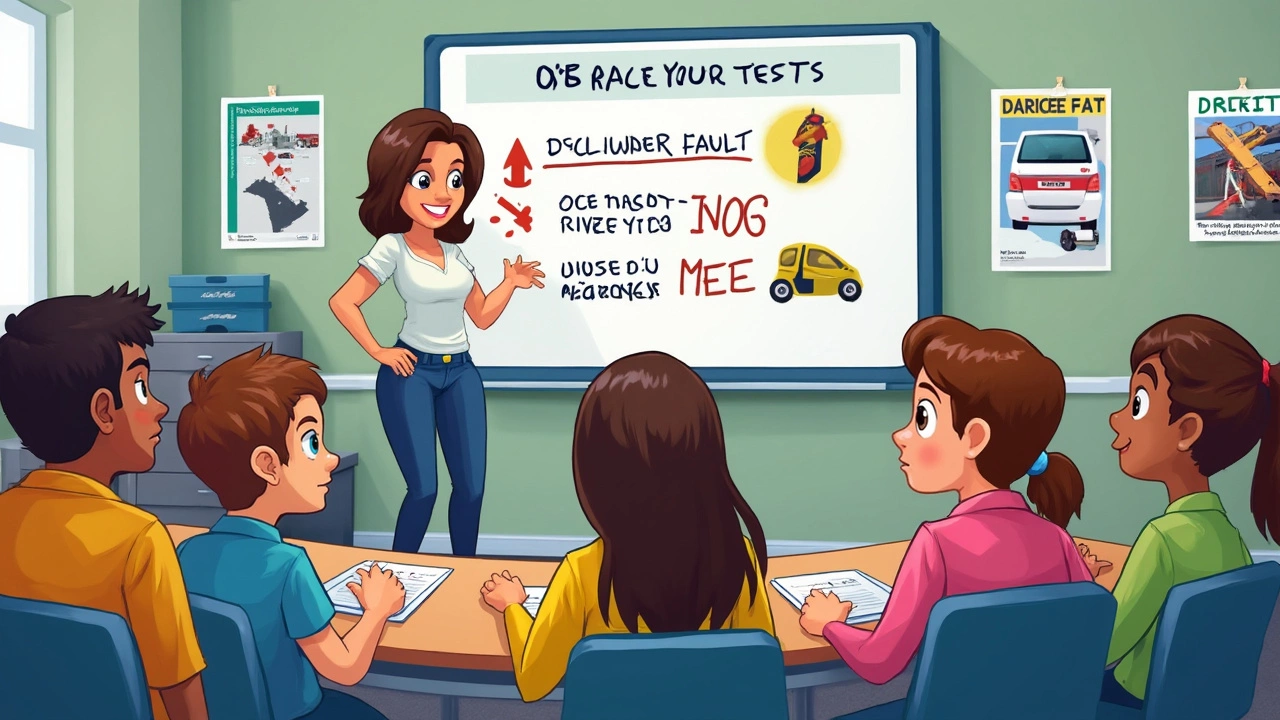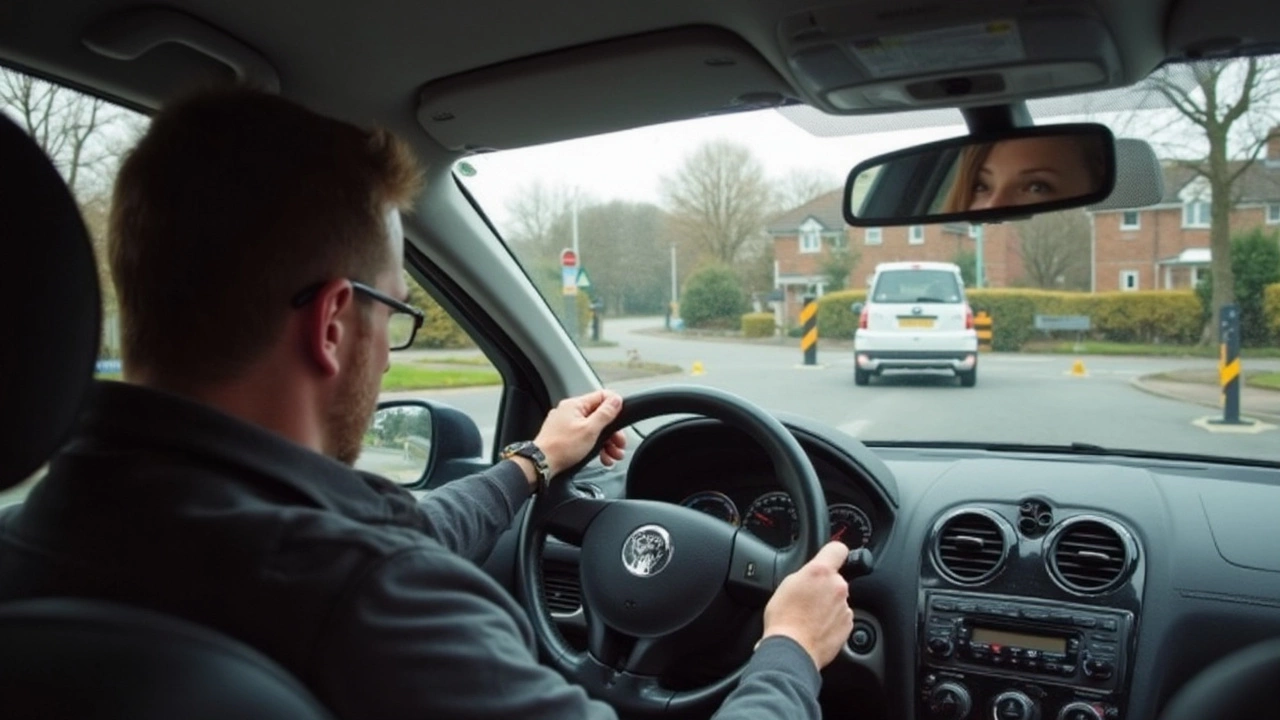Imagine getting behind the wheel for your big driving test. Heart pounding, palms sweaty, it’s all riding on how you handle yourself over the next 40 minutes. Suddenly, you stall at a light, or worse—you forget to indicate and cut someone off. That sinking feeling isn't just nerves; it’s the dread of getting slapped with a 'major fault.' For a lot of folks, these two words haunt their memories of failed attempts. But what exactly is a major fault, and why does it ruin otherwise okay performances?
What is a Major Fault in a Driving Test?
The driving test isn’t just about steering or pressing pedals. Think of it as an all-seeing exam that inspects your decision-making, reactions, habits, and respect for the road and its rules. Examiners—those calm, keen-eyed folks with a clipboard—use a precise checklist. They look for three types of faults: minor, serious, and dangerous. A major fault is anything that the examiner records as 'serious' or 'dangerous.' It’s a deal-breaker. Screw up once in this way, and your test is over, no matter how polished you were otherwise. This isn’t them being harsh; it’s about everyone’s safety.
So what qualifies? A major fault is any action—or lack thereof—that puts you, your passengers, other road users, or property in danger. Miss a mirror check and nearly sideswipe a cyclist—major fault. Forget to stop completely at a red signal—that's another. You could have groomed your parallel parking to perfection, but rolling backwards at a stop sign or ignoring a pedestrian crossing means the exam is a washout. It’s not about perfection, but about showing you’ve got the real-world awareness to drive responsibly when no one’s watching.
You might be surprised how often people receive major faults. According to the UK’s Driver and Vehicle Standards Agency (DVSA), around 50% of candidates fail their practical test on the first try, and about 30% do so because of a single major error. The most frequent culprits? Not using mirrors before changing direction, failing to check at junctions, and poor control when moving off. Flick through social media, and you’ll find stories galore—the guy who forgot to yield at a busy roundabout, the new driver who panicked and stopped dead in live traffic. This stuff happens.
| Year | Major Fault Rate (%) | Most Common Major Faults |
|---|---|---|
| 2023 | 32 | Not checking mirrors, Poor junction observation |
| 2022 | 29 | Improper signaling, Failing to yield |
| 2021 | 31 | Stalling dangerously, Ignoring pedestrian crossings |
So, what’s the big deal? Every major fault is a warning sign—a clue you aren’t quite ready to be responsible for a vehicle. And it’s consistent worldwide. Australia, Canada, Ireland, New Zealand, and most U.S. states use similar standards. The specifics might change—left side of the road in the UK, right side in the States—but the philosophy is identical. A major fault means you’re a risk.

Common Major Faults and Why They Matter
Let’s dig into what lands most learners in trouble. Start with moving off safely. At first glance, just driving away from the curb sounds dead simple. But the examiner is watching: Did you check your blind spot? Was it clear to go? Did you signal? If you swing out blindly, even if nothing’s coming, that reads as carelessness. And carelessness behind the wheel causes accidents—34% of all reported car collisions in the UK in 2023 were linked to lack of awareness, according to road safety data.
Next up, junctions. Failing to give way, either by not stopping at a stop sign or darting out without looking both ways, is the legal equivalent of crossing your fingers and hoping for the best. It’s why so many major faults pile up at junctions: people rush, forget, second-guess themselves. You might see the car coming, but if the examiner can’t see you looking, you’re out of luck.
Proper signaling is another classic pitfall. Forgetting to indicate isn’t just a technical fail; it’s a threat to everyone sharing the road. That little orange flicker is how you communicate your intentions. Not using it is like jumping into conversation without saying hello. Examiners notice. The same goes for lane discipline on roundabouts—do you stay in your lane or drift and confuse everyone?
Even speed plays a surprise role. Go too slow, and you create a hazard; go too fast, and you lose control or miss a hazard. Some people fail for driving well under the limit, blocking up traffic behind or making risky overtakes more likely by others. The sweet spot is judging speed for conditions: is the road wet, are people about, is it school time? A real driver factors all that in.
Braking too hard, rolling on the wrong side of the road, hopping a curb while parking—these all rack up major faults. Sometimes, it’s nerves; sometimes it’s bad habits. But from the examiner’s chair, each is a sign you haven’t yet made safe driving automatic. Even forgetting to wear a seatbelt at the start can mean a major mark—yep, people still do this.
- Failing to observe before moving off
- Not checking mirrors before turns or maneuvers
- Improper use of signals
- Failure at junctions and roundabouts
- Poor control (stalling, rolling back)
- Breaking the speed limit—or driving too slowly
- Unsafe overtaking or lane discipline
- Not yielding to pedestrians or cyclists
- Forgetting seatbelts
- Losing focus during the independent driving section
Each one links straight to accident statistics. Insurance companies constantly tally up claims that can be traced to these kinds of human errors. It’s why examiners don’t cut any slack here. The point is to keep you, and everybody else, alive.

How to Avoid Major Faults: Real Tips That Work
So how do you dodge the dreaded major fault and boost your chance of passing? First, practice like it’s the real deal. Don’t just drive routes you know; tackle tricky junctions, roundabouts, and different road types. Ask your instructor to role-play the strictest examiner you’ve ever heard of. Annoying? Maybe. Helpful? Absolutely.
Get in the habit of narrating what you’re doing: "Mirror, signal, maneuver." Say it out loud if you need to. This keeps your mind focused. Examiners love seeing checks—they should literally see your head turn as you glance at mirrors or over your shoulder. Even if you know no one's there, show them.
Brush up on the Highway Code or your local rulebook, especially around right-of-way, speed limits, and signage. Some folks get so fixated on practical skills, they forget what crossings or signs mean. That knowledge vault gets checked under pressure and slippery conditions—make it automatic.
Another good move is to run a 'mock test' with someone who isn’t your regular instructor. Friends or family, if they’re experienced, can help by sitting in and pretending to be tough. You’ll see how your nerves hold up. According to a 2023 survey by the DVSA, people who did at least three mock tests outside their lessons had a 17% higher pass rate.
Here’s a simple pre-test checklist:
- Mirror-signal-maneuver for every turn, move, or lane swap
- Head checks at all blind spots—make your head movement obvious
- Observe speed at all times, but adapt it for conditions
- Plan stops early, brake smoothly
- Don’t obsess over minor faults; focus on safety instead of perfection
- Stay calm—if you make a mistake, correct it safely and move on
- Always wear your seatbelt—yes, even on the test route
- Listen closely to the examiner’s directions, don’t hesitate to ask for clarification
Remember, the examiner wants to give you a pass. Their job is to spot that spark of safety and responsibility. Stay sharp for the whole test—lots of folks slip up in the last ten minutes, thinking the hard part is done. There’s always a last junction yet to master. Treat every second as if they're grading you on it, because they are.
The day before, sleep well, avoid caffeine overload, and get to the test center early. Do a walk-around of your car—check the mirrors, adjust the seat, make sure you know where everything is. Turn your phone off. This is your shot. Nail the basics, stay focused, and you don’t have to meet the major fault monster. It’s lurking, for sure—but it’s not unbeatable.

